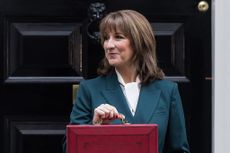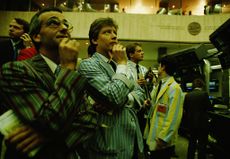Economy
The latest news, updates and features on the UK economy and other global economic stories from the expert team at MoneyWeek.
Explore Economy
-

The reinvention of the high street – and how to invest
The high street brands that can make shopping and leisure an enjoyable experience will thrive, says Maryam Cockar
By Maryam Cockar Published
-

Rachel Reeves's Autumn Budget: What it means for the UK
Opinion A directionless and floundering government has ducked the hard choices at the Autumn Budget, says Simon Wilson
By Simon Wilson Published
Opinion -

How the Budget will hurt you: MoneyWeek Talks
Podcast An Autumn budget podcast special episode, featuring MoneyWeek editors Kalpana Fitzpatrick, Andrew van Sickle and Cris Heaton.
By Kalpana Fitzpatrick Published
Podcast -

How to profit from defence stocks beyond Europe
Opinion Tom Bailey, head of research for the Future of Defence Indo-Pac ex-China UCITS ETF, picks three defence stocks where he'd put his money
By Tom Bailey Published
Opinion -

Workspace: Profit from a return to the office
Workspace is an unloved play on the real estate investment trust sector as demand for flexible office space rises
By Rupert Hargreaves Published
-

Investment trust troubles: back to the 1970s for investors?
Opinion Those fearing for the future of investment trusts should remember what happened 50 years ago, says Max King
By Max King Published
Opinion -

No peace dividend in Trump's Russia-Ukraine peace plan
Opinion An end to fighting in Ukraine will hurt defence shares in the short term, but the boom is likely to continue given US isolationism, says Matthew Lynn
By Matthew Lynn Published
Opinion -

Will the internet break – and can we protect it?
The internet is a delicate global physical and digital network that can easily be paralysed. Why is that, and what can be done to bolster its defences?
By Simon Wilson Published
-

Why UK stocks are set to boom
Opinion Despite Labour, there is scope for UK stocks to make more gains in the years ahead, says Max King
By Max King Published
Opinion
